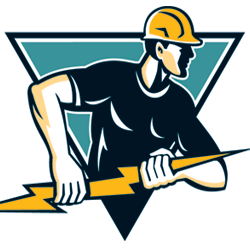|
exhibiting 101

Form and Function
To help you navigate the inevitable trade show paper trail, here's an explanation of common show-related paperwork.
Looking back, it seems like I spent the first few years as an exhibit manager doing nothing but filling out forms. At the time, I convinced myself that processing show orders would get easier over time and with practice. Little did I know that this was just wishful thinking, since no two shows are exactly the same when it comes to paperwork.
These necessary forms — and accompanying fine print explaining them — are distributed to exhibitors via the exhibitor services manual, sometimes called the exhibitor kit. These kits are generally available online or as downloadable PDFs and vary in size from a few dozen pages for small tabletop shows to 500-page books for multivenue mega-shows. Each form comes from one of the multiple organizations providing products and services at a given show. Read on for an overview of the most common order forms typically found in an exhibitor kit, complete with descriptions and insider information. Block-Housing Request The first form you have to complete after you sign up for a show is the one to reserve hotel rooms for your staff. Generally, the housing bureau doesn't require guest names on the rooms when initially blocked, rather just total number of rooms required per night. At a predetermined future date, names will need to be assigned to the rooms along with credit-card information to guarantee the first night's deposit. When you receive the confirmation of your block request, the number assigned to each reservation is not a valid hotel confirmation number — it's only the housing bureau's internal identifier. The housing bureau releases the block-housing information to the hotels about five to seven days before show move in begins, at which point hotels assign actual confirmation numbers to each reservation. It's your responsibility to contact the hotel to get those numbers and then pass them along to your staff. Booth-Space Rental Agreement This form is typically provided in conjunction with two other forms: the show's floor plan and its basic terms and conditions. One of those conditions is boilerplate for most shows and states, i.e., that the show managers or organizers can do anything they deem to be in the best interest of the trade show. This could include moving you out of the booth space you've selected and been assigned so that they can resell it to a more financially lucrative exhibitor, moving the trade show's date, switching venues, or even canceling the show. I've experienced all of these "for the betterment of the show" stunts during my career. I've also made sure that I didn't work again with these show managers who believed their greed was more important than their exhibitor relationships. Variance Form A variance form allows exhibitors to request a variance, or waiver, to a rule or regulation outlined in the booth-space rental contract or the exhibitor services manual. Examples of variances I've requested and received in the past include: changing the dates when future booth space deposits are due, serving coffee in my booth when it was banned on the show floor, having a 16-foot back wall on a perimeter exhibit when the industry standard is 12 feet, and requesting earlier or later targeted inbound material handling when my exhibit was coming from another trade show. The main thing to keep in mind when completing a variance form is that the show manager just wants to keep all its customers happy, and if what you're asking for won't upset neighboring exhibitors, you've probably got a good chance of having your request granted. Exhibitor Appointed Contractor Form Should you decide not to hire one of the official contractors listed in the exhibitor services manual, you can employ an exhibitor appointed contractor (EAC). Between 30 to 60 days prior to the show, you will need to notify show management and/or the general services contractor (GSC) of your plans to hire an EAC. The EAC needs to submit the proper insurance policy stating that the EAC has both commercial general liability and workers' compensation coverage. That policy must name all the required additional insureds. Material Handling Form This form helps the GSC to determine its freight-moving equipment and staffing needs on the convention center's loading docks. Since you aren't charged for your material handling prior to the arrival of your shipment, there is no benefit to fudging the weight or size of the freight you're bringing into the venue. If all exhibitors provided lowball freight estimates, it could be detrimental to everyone's move-in efforts because the GSC would not have sufficient equipment and labor resources to accommodate all the freight. Bill of Lading The bill of lading is the single most important document in the entire shipping process. It establishes the terms of a contract between a shipper and a transportation company under which freight is to be moved between specified points for a charge. It is provided by your carrier and serves as a document of title, contract of carriage, and receipt of goods. Always complete all shaded sections of the bill of lading and read the entire form before you sign it. You will need to turn it in to the GSC's service desk after the show, along with your Uniform Material Handling Agreement (see below). By signing the bill of lading, you are agreeing to be bound by all of its terms and conditions. Uniform Material Handling Agreement Provided to exhibitors by the GSC, a Uniform Material Handling Agreement (UMHA) looks like a bill of lading. It establishes the terms of the agreement between the exhibitor and the GSC to handle your outbound loading of freight from the show. You will be given a separate UMHA for each outbound shipment when you settle your financial account with the GSC during the show. This outbound UMHA is turned in to the GSC's service desk when dismantle is completed and you have filled in all its shaded sections, including an accurate piece count by type of freight (cartons, cases, crates, pallets/skids, carpet, etc.) that should match the count on your bill of lading. Your transportation carrier will not be called up from the marshaling yard to load your shipment until you have completed the UMHA and turned it in. If you're not going to be at your booth throughout the entire dismantle and reloading process, make sure your dismantle supervisor knows that the UMHA must be completed and turned in to the GSC to assure that your load is consigned to your carrier of choice. Otherwise the GSC may force your exhibit freight onto its carrier of choice, generally the official common carrier for that show or its own internal freight department. It will then either be moved to the GSC's warehouse for storage pending your notification of what you want it to do with your freight, or shipped to you at a higher rate. Note that you'll have an opportunity to select the option that best suits you when you fill out the UMHA. Installation-and-Dismantle Labor Form Depending on what time you place the order for the GSC's installation-and-dismantle labor to arrive at your booth, you could be waiting for a while. Only I&D labor that is ordered to begin at the start of the workday (generally 7:30 or 8 a.m.) is guaranteed to arrive at that time. Specifying any other arrival time for the GSC's labor services will result in being assigned "will-call" status, which means your labor crew will arrive whenever it has completed another exhibitor's work and is ready for reassignment. Method of Payment This is the GSC's form that basically states, "show me the money." It asks for the manner in which the GSC's pre-show payments (for show services and products) will be paid: by company check, wire transfer, or credit card. Regardless of how you decide to make pre-show payments, the GSC still requires that a credit card be on file for any additional charges that might be incurred during or after the trade show. Despite the time-consuming and tedious nature of exhibitor services manuals and the multitude of forms within, it's important to read each page from top to bottom and front to back so you enter the show fully informed and prepared. As I like to say, "The large print giveth, and the fine print taketh away." E  Candy Adams
Candy AdamsCTSM, CEM, CMP, CMM "The Booth Mom," is an independent exhibit project manager, trainer, speaker, consultant, and an Exhibitor Conference faculty member. CandyAdams@BoothMom.com
|
|
|
||||||||||||||||||||||||||||
|
|
||||||||||||||||||||||||||||
|
TOPICS Measurement & Budgeting Planning & Execution Marketing & Promotion Events & Venues Personal & Career Exhibits & Experiences International Exhibiting Resources for Rookies Research & Resources |
MAGAZINE Subscribe Today! Renew Subscription Update Address Digital Downloads Newsletters Advertise |
FIND-IT Exhibit & Display Producers Products & Services Supplier to Supplier All Companies Compare Get Listed |
EXHIBITORLIVE Sessions Certification Exhibit Hall Exhibit at the Show Registration |
ETRAK Sessions Certification F.A.Q. Registration |
EDUCATION WEEK Overview Sessions Hotel Registration |
CERTIFICATION The Program Steps to Certification Faculty and Staff Enroll in CTSM Submit Quiz Answers My CTSM |
AWARDS Sizzle Awards Exhibit Design Awards Portable/Modular Awards Corporate Event Awards Centers of Excellence |
NEWS Associations/Press Awards Company News International New Products People Shows & Events Venues & Destinations EXHIBITOR News |
||||||||||||||||||||
|
||||||||||||||||||||||||||||






